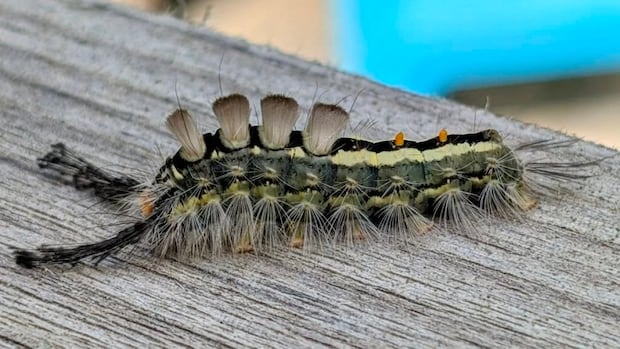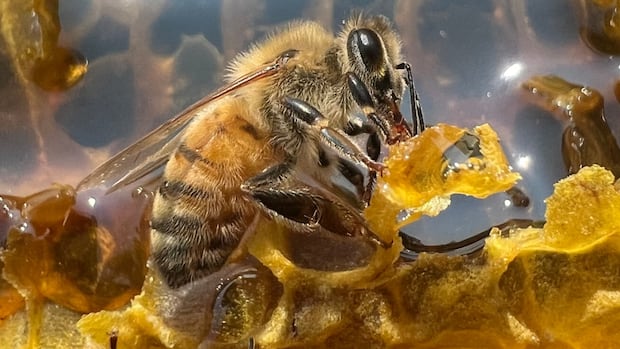Fuzzy caterpillar destroys foliage in parts of western, central Newfoundland

Fuzzy caterpillars invade Humber Valley region of Newfoundland
This summer, the Humber Valley region of Newfoundland was overrun by fuzzy caterpillars with orange and white backs. These white tussock moth caterpillars feasted on multiple species of trees, leaving behind brown patches across the landscape.
Residents like Mark Grady of Corner Brook were astounded by the sheer number of caterpillars. These creatures were everywhere – in trees, bushes, and even covering patios.
According to research scientist Joe Bowden from the Atlantic Forestry Centre, the surge in the white tussock moth population could be attributed to climate change and the hot, dry weather. He noted that species are emerging earlier and being redistributed across the planet on a broad scale.
The damage caused by these caterpillars was observed in various areas such as White Bay, Green Bay, Corner Brook, St. Albans, Conne River, and along the Bay d’Espoir Highway. Fortunately, the disturbance was fairly localized and did not affect other parts of Canada.
By mid-August, the caterpillars had completed their feeding cycle, and male white tussock moths could be seen flying around the Corner Brook area. The female moths, on the other hand, would pupate and lay eggs in cocoons, waiting out the winter months. These cocoons can be found on various surfaces, including homes and decks.
Bowden predicts that the high numbers of white tussock moths will persist for several years. As populations become denser, disease can spread quickly among them, ultimately reducing the population after three to five years.
For more updates on local news, download the free CBC News app and sign up for push alerts for CBC Newfoundland and Labrador. Stay informed with our daily headlines newsletter and visit our landing page for more information.




